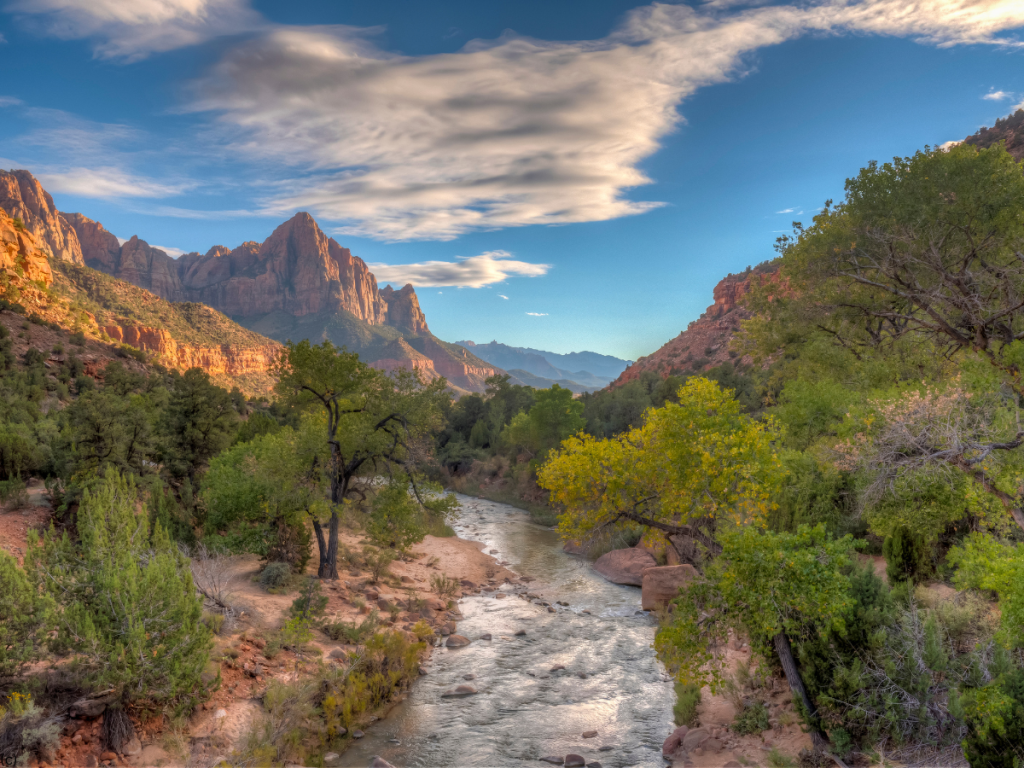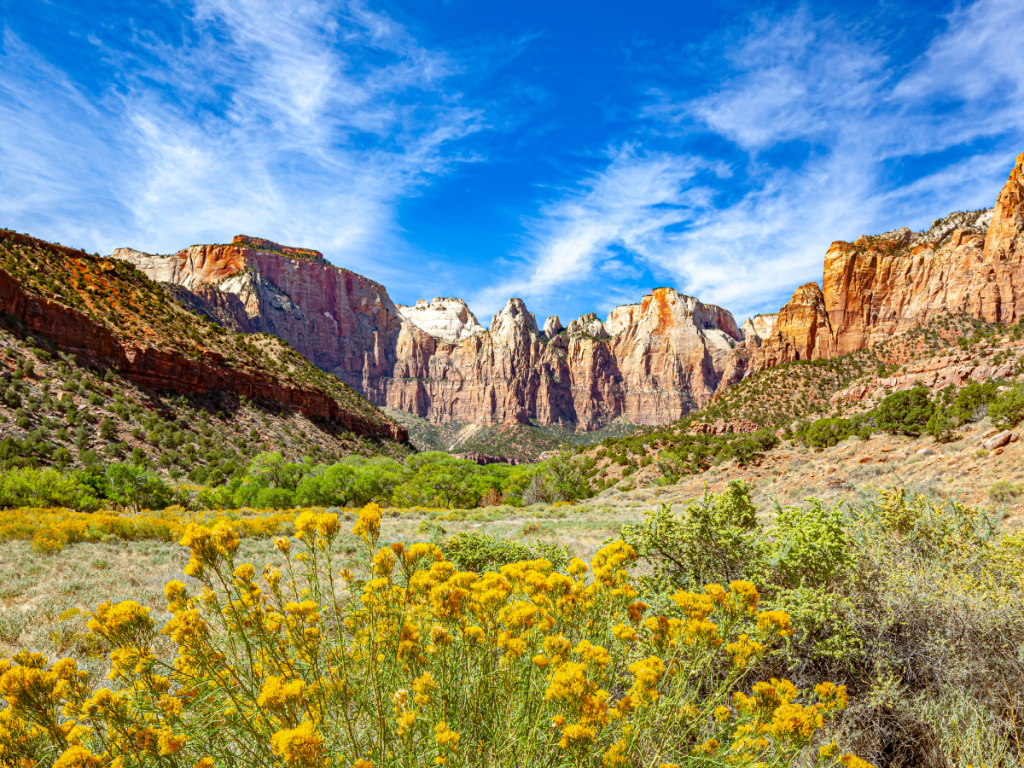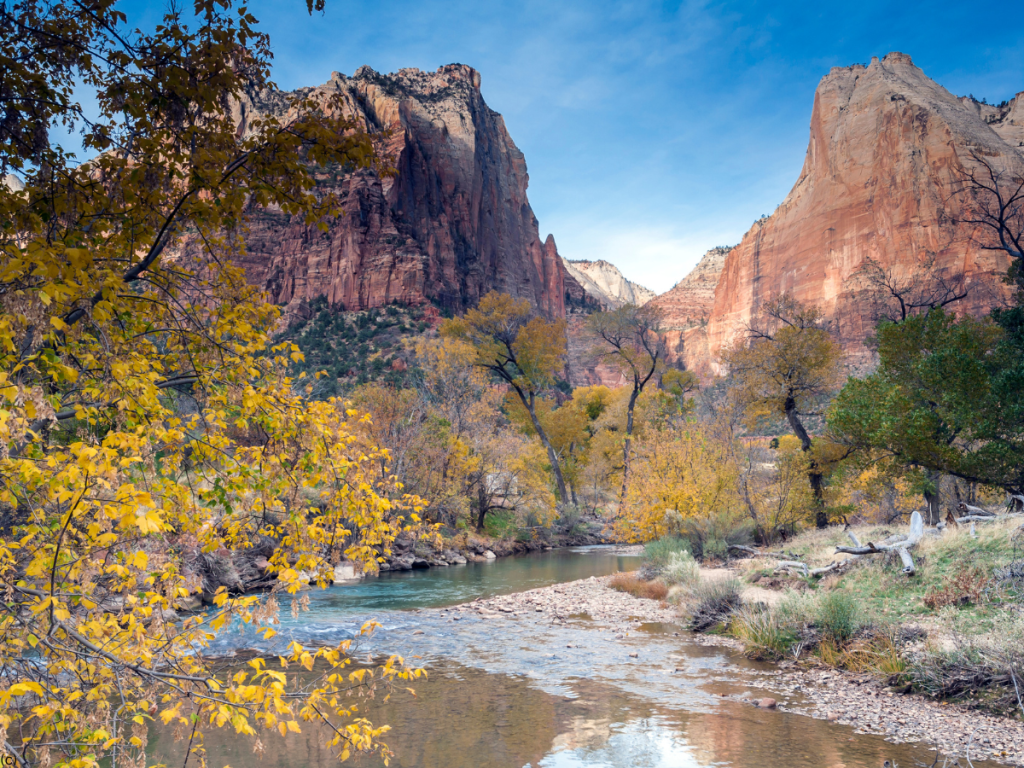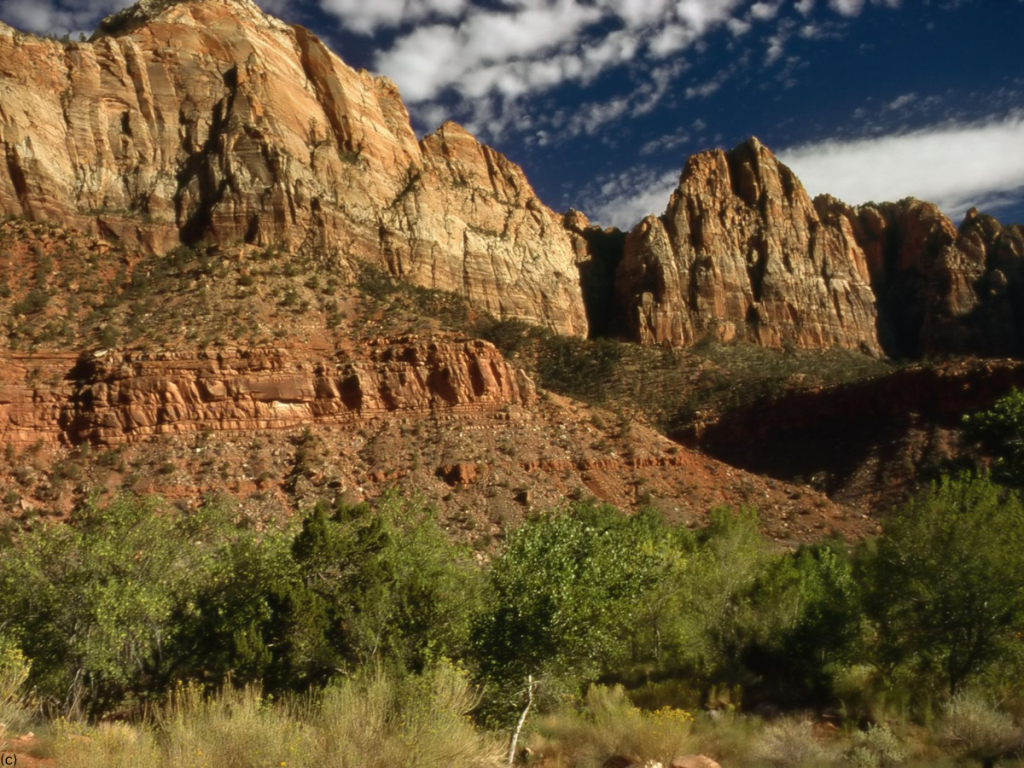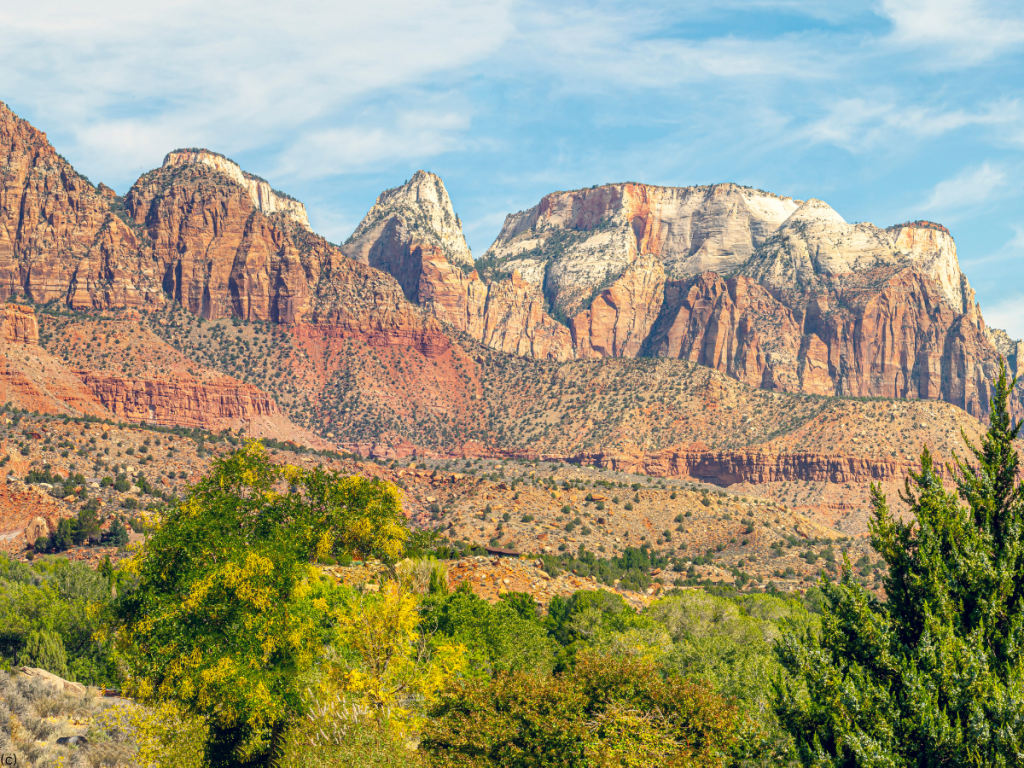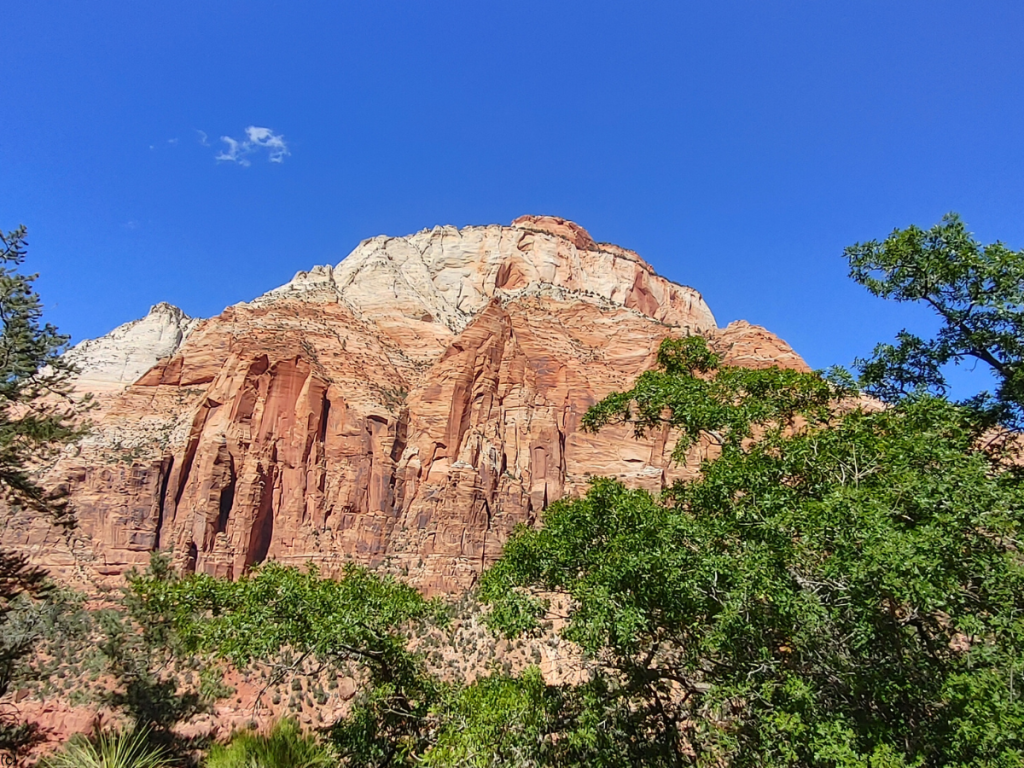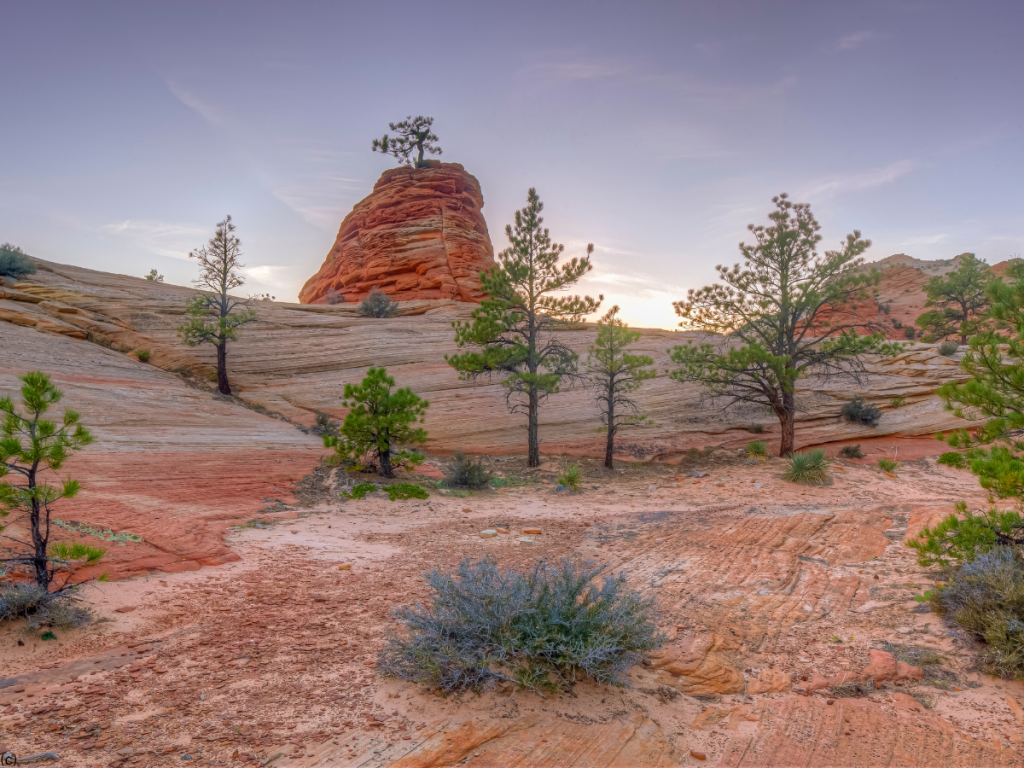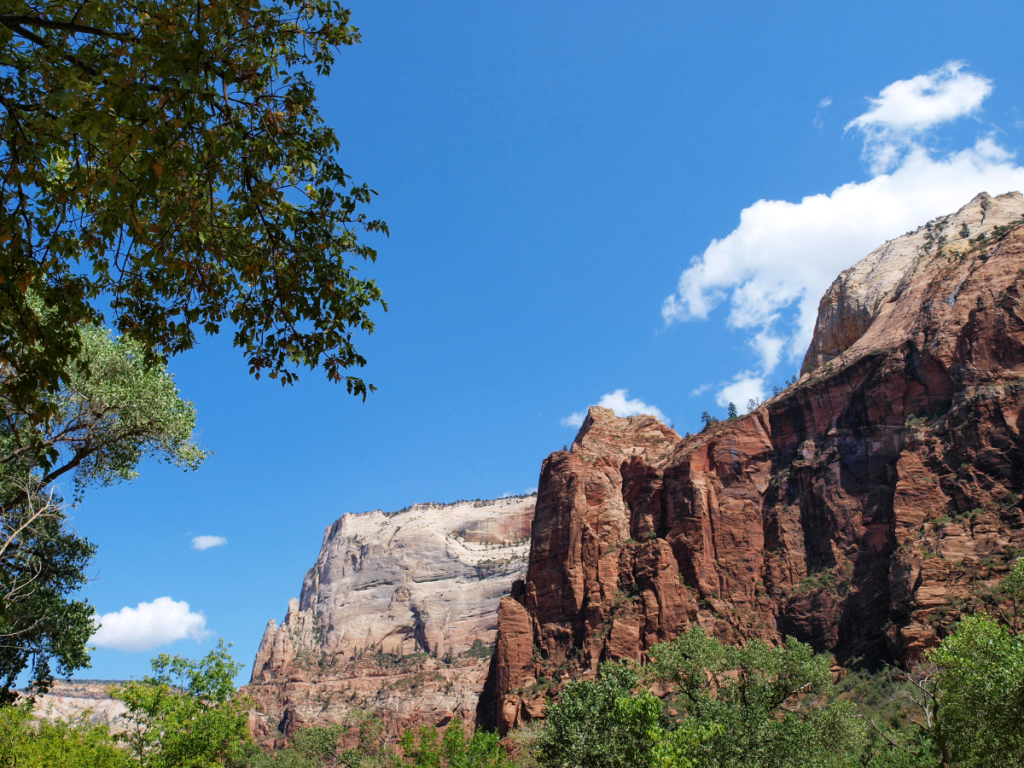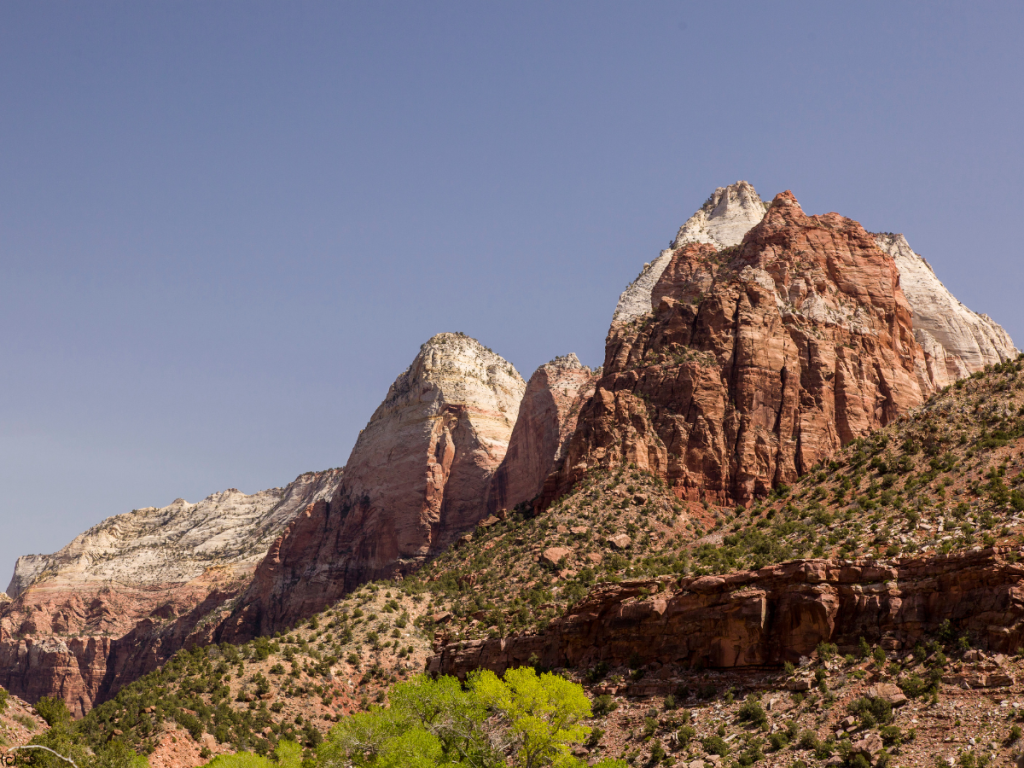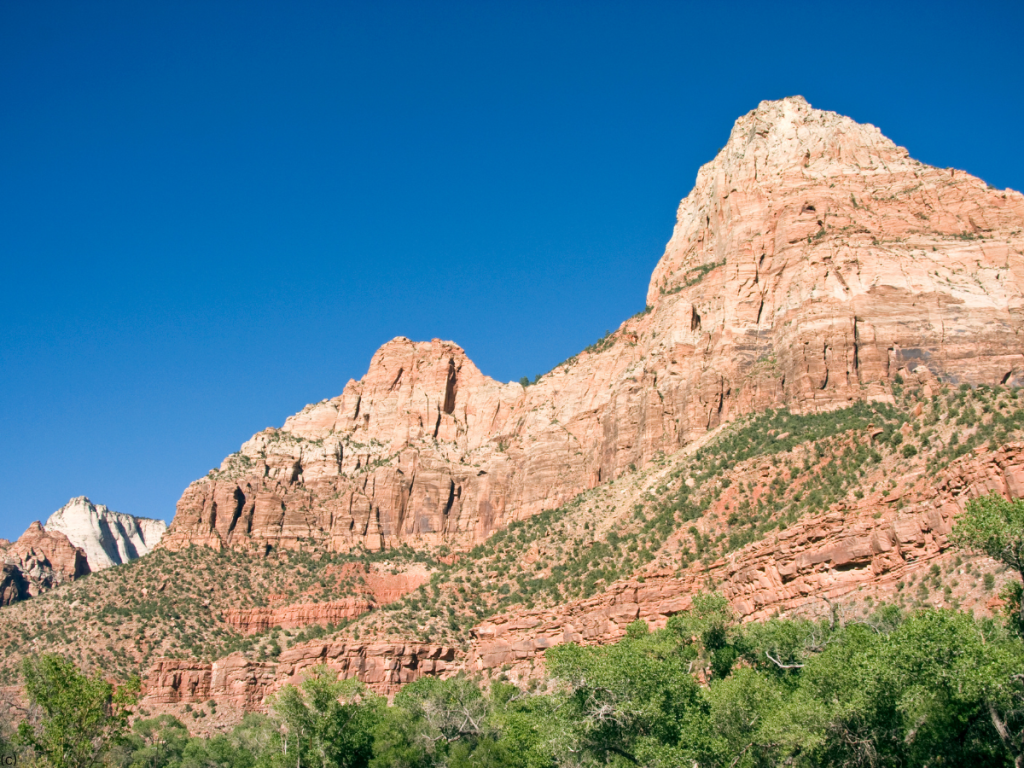 , is a breathtaking tapestry of towering sandstone cliffs, narrow slot canyons, and lush hanging gardens. As one of the most popular national parks in the United States, Zion offers visitors a diverse range of activities, from challenging hikes and canyoneering adventures to serene scenic drives and peaceful picnics by the Virgin River. Whether you are an adrenaline seeker or someone looking to connect with nature, Zion has something for everyone. This guide will help you navigate the park’s highlights and make the most of your visit.
, is a breathtaking tapestry of towering sandstone cliffs, narrow slot canyons, and lush hanging gardens. As one of the most popular national parks in the United States, Zion offers visitors a diverse range of activities, from challenging hikes and canyoneering adventures to serene scenic drives and peaceful picnics by the Virgin River. Whether you are an adrenaline seeker or someone looking to connect with nature, Zion has something for everyone. This guide will help you navigate the park’s highlights and make the most of your visit.
1. The Essentials: Getting to Zion and Park Basics
A. Getting There
Zion National Park is easily accessible from several major cities. The nearest airports are in Las Vegas, Nevada (about 2.5 hours drive) and Salt Lake City, Utah (about 4.5 hours drive). For those driving from these or other cities, Zion is located near the town of Springdale, which serves as the gateway to the park. Springdale is well-equipped with hotels, restaurants, and shops catering to park visitors.
B. Park Entrances and Fees
There are two main entrances to Zion: the South Entrance near Springdale, and the East Entrance off Highway 9, coming from the direction of Bryce Canyon National Park or the Grand Staircase-Escalante National Monument. A vehicle pass costs $35 and is valid for seven days, while a pedestrian or cyclist pass costs $20. Annual and lifetime passes are also available for those planning multiple visits.
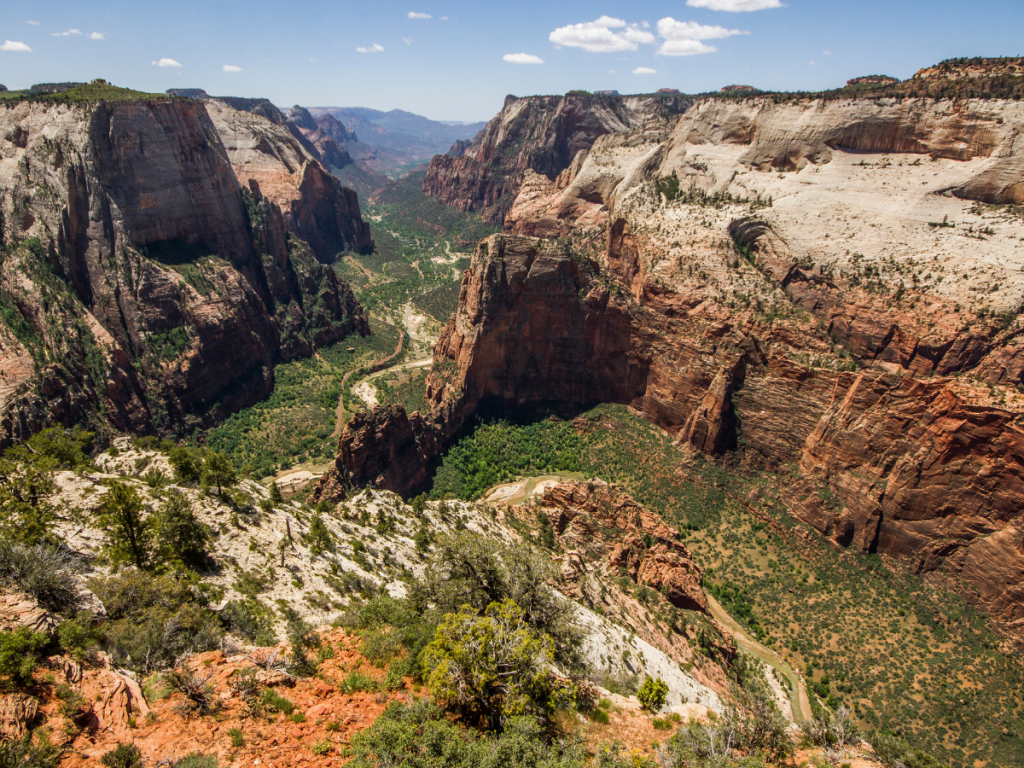 2. Iconic Hikes: From Casual Walks to Heart-Pounding Adventures
2. Iconic Hikes: From Casual Walks to Heart-Pounding Adventures
Zion is renowned for its hiking trails, which range from easy, family-friendly strolls to strenuous, bucket-list challenges. Here’s a look at some of the park’s most famous hikes:
A. Angels Landing
One of Zion’s most popular and challenging hikes, Angels Landing offers adrenaline-pumping exposure and stunning views. The trail is 5.4 miles round trip with an elevation gain of 1,488 feet. It begins at The Grotto Trailhead, leading you through Refrigerator Canyon and up the famous Walter’s Wiggles switchbacks. The final half-mile is a nerve-wracking climb along a narrow ridge with chains bolted into the rock for safety. While the views from the top are unparalleled, this hike is not for those with a fear of heights.
B. The Narrows
The Narrows is an iconic slot canyon hike, where you’ll be wading and sometimes swimming through the Virgin River. The trailhead is at the Temple of Sinawava, and the hike can be as short or long as you like, with a popular option being the 10-mile round trip to Big Spring. Water levels and weather conditions can greatly affect the difficulty of this hike, so be sure to check the conditions at the Visitor Center before heading out. Proper footwear and gear, including a dry bag, are recommended.
C. Observation Point
For those looking for a less crowded alternative to Angels Landing with equally spectacular views, Observation Point is an excellent choice. This 8-mile round trip hike gains 2,148 feet in elevation, taking you through Echo Canyon and up to a vantage point that offers panoramic views of the entire Zion Canyon, including Angels Landing far below. The trail begins at the Weeping Rock Trailhead and is moderately strenuous.
D. Emerald Pools
The Emerald Pools trail system offers a more relaxed hiking experience with options for various skill levels. The Lower Emerald Pool Trail is an easy 1.2-mile round trip walk that takes you to a shimmering pool beneath a waterfall. The Middle and Upper Pools require more effort, with the Upper Pool being a moderately strenuous 3-mile round trip hike. All trails start at the Zion Lodge, making them easily accessible for families and casual hikers.
3. Scenic Drives: Experience Zion’s Beauty from Your Car
If hiking isn’t your thing, or if you’re looking for a more relaxed way to enjoy Zion’s scenery, the park’s scenic drives offer breathtaking views with minimal physical effort.
A. Zion Canyon Scenic Drive
This 6-mile road is the main artery of Zion National Park, running from the South Entrance to the Temple of Sinawava. The road is closed to private vehicles during the busy season (March through November), but the park operates a free shuttle system that stops at key points along the route, including the Visitor Center, Zion Lodge, and various trailheads. The drive offers stunning views of Zion’s towering sandstone cliffs and is a great way to get a sense of the park’s grandeur.
B. Zion-Mount Carmel Highway
This scenic drive runs from the South Entrance to the East Entrance, winding through some of Zion’s most dramatic landscapes. Highlights include the famous Zion-Mount Carmel Tunnel, a mile-long engineering marvel, and the Checkerboard Mesa, a uniquely patterned rock formation. The road offers numerous pullouts where you can stop and take in the scenery, making it ideal for photography enthusiasts.
C. Kolob Canyons
Located in the lesser-visited northern section of the park, the Kolob Canyons Scenic Drive is a 5-mile road that offers stunning views of the park’s red rock formations and lush canyons. The drive is especially beautiful during sunrise and sunset when the colors of the rocks are at their most vibrant. There are also several short hiking trails that start from this road, including the Taylor Creek Trail and the Timber Creek Overlook Trail.
4. Canyoneering: An Adventure Seeker’s Paradise
Zion’s unique geology makes it a prime destination for canyoneering, the sport of navigating through slot canyons using a combination of hiking, climbing, rappelling, and swimming. The park offers canyoneering experiences for all skill levels, but permits are required for most routes.
A. The Subway
One of Zion’s most famous and photogenic canyoneering routes, The Subway is a challenging and technical adventure. The route requires route-finding, rappelling, and swimming through cold water, making it suitable for experienced canyoneers. The hike is approximately 9 miles round trip, and permits are required. Due to its popularity, permits are issued through a lottery system, so plan well in advance.
B. Pine Creek Canyon
Pine Creek Canyon is a shorter, but equally thrilling canyoneering route that requires technical skills. This 2-mile route involves multiple rappels, including a spectacular 100-foot drop, as well as swimming through narrow slots and pools. Like The Subway, a permit is required, and this route is recommended for those with prior canyoneering experience.
C. Orderville Canyon
For those new to canyoneering, Orderville Canyon offers a less technical introduction while still providing plenty of adventure. This route begins near the East Entrance and descends through a beautiful slot canyon, eventually merging with The Narrows. The full route is about 12 miles, but shorter options are available. A permit is required for the full route.
5. Wildlife and Nature Viewing: Connect with Zion’s Natural World
Zion National Park is home to a diverse array of wildlife, from bighorn sheep and mule deer to peregrine falcons and California condors. The park’s varied ecosystems, from desert lowlands to high plateaus, provide habitat for a wide range of species.
A. Wildlife Viewing
One of the best places to spot wildlife is along the Zion Canyon Scenic Drive, especially early in the morning or in the evening when animals are most active. Bighorn sheep are often seen on the cliffs near the East Entrance, while mule deer are frequently spotted near the Virgin River. Birdwatchers will also find Zion to be a haven, with over 200 species recorded in the park.
B. Botanical Wonders
Zion is also home to a diverse range of plant life, thanks to its varied elevations and microclimates. The hanging gardens found in areas like Weeping Rock and the Emerald Pools are particularly striking, featuring ferns, mosses, and wildflowers clinging to the rock walls. The park is also home to unique plant species like the Zion snail and the endangered Siler’s pincushion cactus.
6. Visitor Centers and Museums: Learning About Zion’s Rich History and Ecology
To deepen your understanding of Zion National Park, make time to visit its visitor centers and museums, which offer educational exhibits, films, and ranger-led programs.
A. Zion Canyon Visitor Center
Located near the South Entrance, the Zion Canyon Visitor Center is the main hub for park information. Here, you can pick up maps, check trail conditions, and learn about the park’s natural and cultural history through exhibits and a short film. Rangers are available to answer questions and provide recommendations for your visit.
B. Human History Museum
Also located near the South Entrance, the Human History Museum explores the rich cultural history of Zion, from its Native American inhabitants to the pioneers who settled the area in the 19th century. The museum features exhibits on the park’s geology, ecology, and human history, as well as a 22-minute film that provides an overview of Zion’s natural wonders.
C. Kolob Canyons Visitor Center
If you’re visiting the northern section of the park, the Kolob Canyons Visitor Center is a great place to stop for information and exhibits on this less-visited area. The center offers stunning views of the Kolob Canyons, as well as exhibits on the geology and natural history of this part of the park.
7. Camping and Lodging: Where to Stay in and Around Zion
Whether you prefer camping under the stars or the comfort of a lodge, Zion offers a range of accommodation options to suit every preference.
A. Camping
Zion has three campgrounds: South Campground, Watchman Campground, and Lava Point Campground. South and Watchman campgrounds are located near the South Entrance and offer easy access to the park’s main attractions. Both campgrounds offer reservations, and they fill up quickly, so booking in advance is recommended. Lava Point Campground is located on the Kolob Terrace Road and is more remote, offering a quieter experience.
For those seeking a more back-to-nature experience, Zion also offers several backcountry campsites, accessible via a permit system. These sites are located in more remote areas of the park and require hiking to reach, making them ideal for those looking for solitude.
B. Lodging
For those who prefer not to camp, Zion Lodge is the only in-park lodging option. Located in the heart of Zion Canyon, the lodge offers cabins, hotel rooms, and suites, all within walking distance of popular trails like Emerald Pools and Angels Landing. Reservations are essential, especially during the peak season.
Outside the park, the town of Springdale offers a wide range of accommodations, from budget motels to upscale hotels. Staying in Springdale provides easy access to the park, as well as a variety of dining and shopping options.
8. Photography and Stargazing: Capturing Zion’s Beauty
Zion’s dramatic landscapes and clear night skies make it a paradise for photographers and stargazers alike.
A. Photography Tips
The best times for photography in Zion are early morning and late afternoon when the lighting is soft and the shadows are long. Popular spots for sunrise include Canyon Overlook, which offers stunning views of Zion Canyon, and the Towers of the Virgin, which glow in the first light of day. For sunset, try the Watchman viewpoint near the Visitor Center or the Kolob Canyons for a more off-the-beaten-path experience.
B. Stargazing
Zion is a designated International Dark Sky Park, meaning it offers excellent opportunities for stargazing. The park’s remote location and low light pollution allow for stunning views of the Milky Way, especially during the summer months. The Kolob Canyons and the Kolob Terrace Road are particularly good spots for stargazing, offering expansive views of the night sky.
9. Seasonal Considerations: When to Visit Zion
Zion is a year-round destination, but the experience can vary greatly depending on the season.
A. Spring and Fall
Spring (March to May) and fall (September to November) are the most popular times to visit Zion, thanks to the pleasant weather and vibrant colors. Spring brings wildflowers and flowing waterfalls, while fall offers stunning foliage, especially in the higher elevations.
B. Summer
Summer (June to August) is the busiest time in Zion, with warm temperatures and long days perfect for hiking and exploring. However, the park can get crowded, especially on popular trails like Angels Landing and The Narrows. Be prepared for high temperatures, and plan to hike early in the morning or in the evening to avoid the heat.
C. Winter
Winter (December to February) is the least crowded time to visit Zion, offering a peaceful and serene experience. Snow is rare in Zion Canyon, but it’s more common at higher elevations. Many trails remain accessible, though some, like Angels Landing, can be treacherous due to ice. Winter is also a great time for photography, with the possibility of capturing snow-dusted red rocks under a clear blue sky.
10. Embrace the Spirit of Zion
Zion National Park is more than just a collection of stunning landscapes; it’s a place that invites you to connect with the natural world in a profound way. Whether you’re hiking to a breathtaking vista, wading through a narrow canyon, or simply sitting quietly by the river, Zion offers countless opportunities to find adventure, peace, and inspiration.
As you plan your visit, remember to respect the park’s fragile environment by following Leave No Trace principles and being mindful of your impact. By doing so, you’ll help ensure that Zion remains a pristine and awe-inspiring destination for generations to come.
No matter how you choose to experience Zion, one thing is certain: the park’s beauty and grandeur will leave an indelible mark on your soul. So pack your bags, lace up your boots, and get ready to embark on an unforgettable journey into the heart of one of America’s most iconic national parks.
